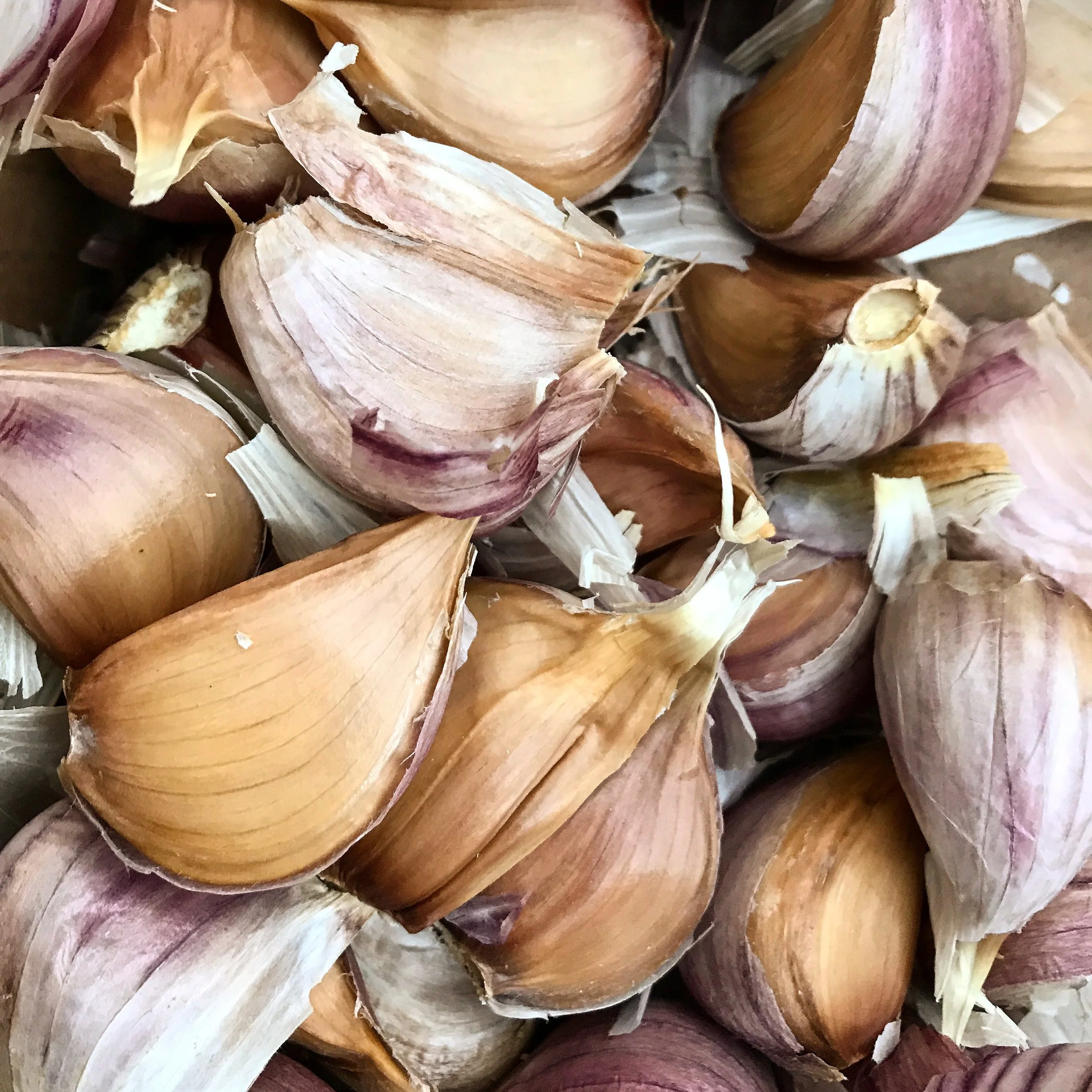“Shallots are for babies. Onions are for men. Garlic is for heroes.”
It’s true I’m a garlic freak. I’ll add the chopped bulb to most any dish, most often sliced thin and used raw. And I’m a big believer in its healing powers; it's the first thing I'll ask for when I get off a plane or am feeling punky. But I grew impatient buying inferior garlic. Oddly, many purchased bulbs exhibited the same heartbreaking characteristics as corked wine, infected by bacteria. Or they hail from far-away farms, even if they're organic. To ensure my kitchen pantry, a.k.a. my pharmacy, was well stocked with naturally grown, local garlic of high quality, there was not other choice but to take spade to dirt and grow my own.
One should never drink large glasses of old Rioja and peruse seed catalogues. Suffice it to say, fifty varieties of garlic, and two of shallot, were researched and ordered. Each seed was laboriously, lovingly hand-planted during the second quarter of the moon phase in early October. Each clove was buried with a fistful of a special vermicompost, produced by a farmer in Sonoma. Vermicompost uses certain species of earthworms to convert organic waste into nutrient dense food immediately available to the plants. In the spring, the growing bulbs were treated to a dusting of fish meal, encouraging the greening of the leaves (to help the paper skins develop properly), and then dried kelp for the development of the bulbs. Along with copious amounts of sunshine and good, non-chlorinated water, the bulbs were left to grow for nine full months before being harvested, cured and cleaned.
Native to central Asia, the pungent bulb has been used for more than 7,000 years in kitchens from Asia to Africa, throughout Europe, and heartily embraced in the Mediterranean regions. Ancient Egyptians fed garlic to laborers building the Pyramids. Ancient Greeks extolled garlic’s benefits as an over-all curative. Ancient Romans fed it to their soldiers and sailors to increase stamina. Before humans subscribed to better living through chemistry, these cultures understood food is medicine. Garlic rightfully earned its place in the mortars of both canteen and pharmacy ever since. The writings of wise men such as Hippocrates, Galen, Pliny the Elder, and Dioscorides mention garlic for treating conditions, such as parasites, respiratory problems, poor digestion, and low energy.
More recently, nutrition scientists at the University of Florida found garlic boosts the number of T-cells in the blood stream. The bulb’s benefits have been noted with helping to treat high blood pressure, cholesterol and heart disease. Garlic is used for building the immune system, fighting colds and flu, preventing and treating bacterial and fungal infection, and maintaining healthy liver function. Louis Pasteur discovered garlic kills bacteria and I’ve even known athletes who apply garlic’s oil topically to treat jock itch and athlete’s foot.
But in the end, it’s the flavor that adds depth and character and complexity to my cooking - and my day. And each variety is incredibly and wonderfully different. I’d certainly look forward to sharing 2017-2018’s garlic harvest with you.
In allium love,
Lisa Minucci
“What garlic is to salad, insanity is to art.”
— Augustus Saint-Gaudens


